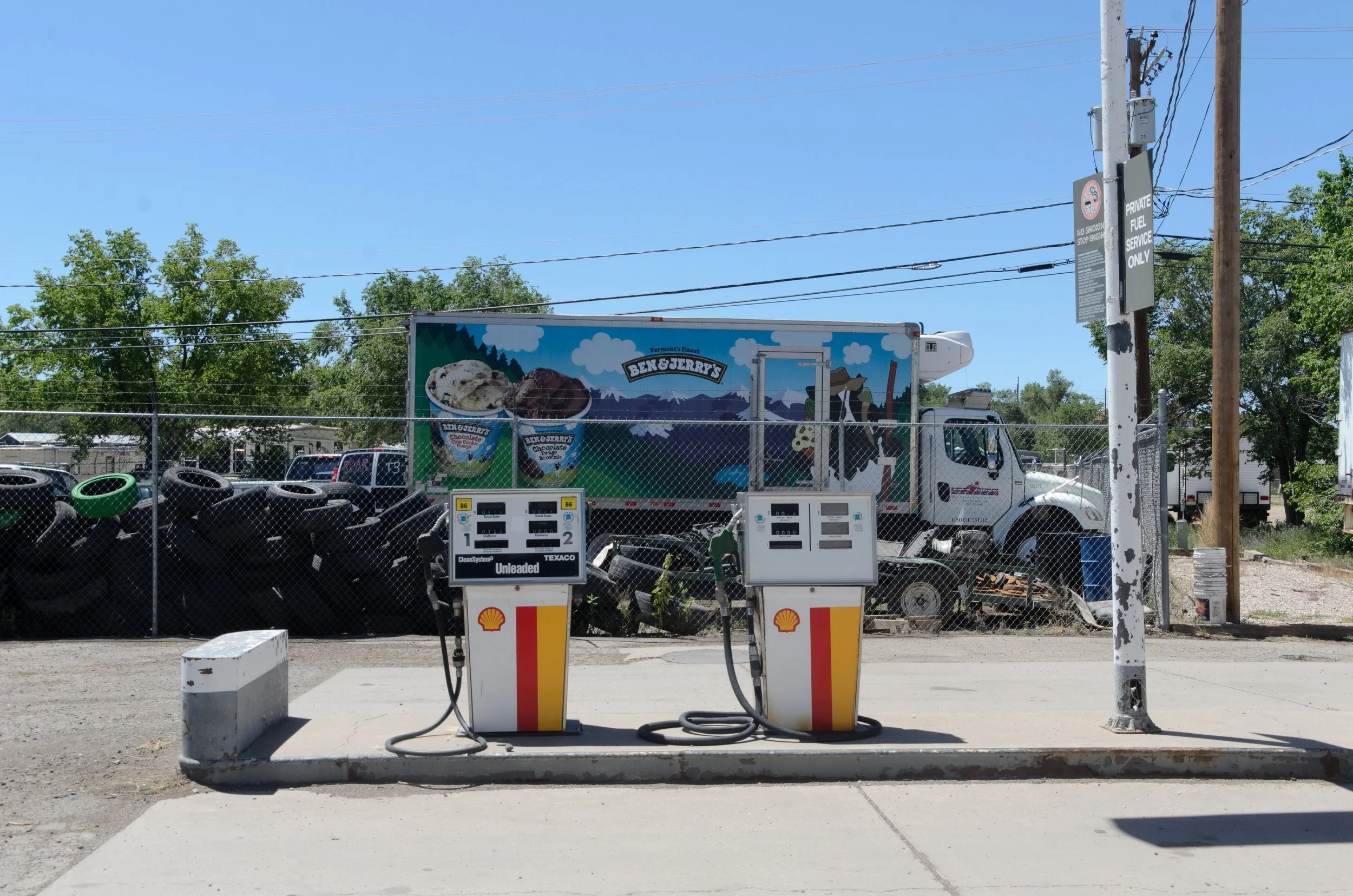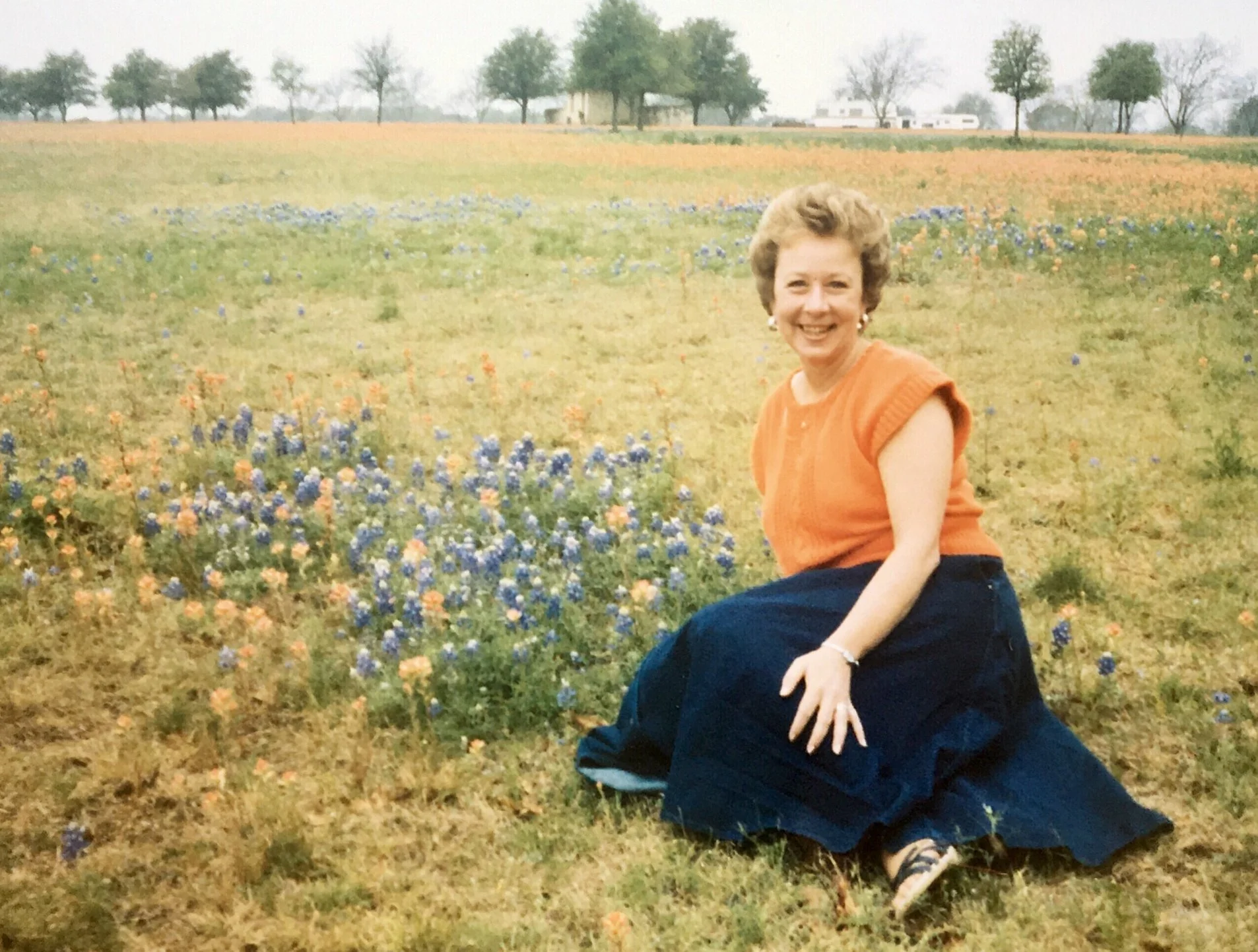Why "Mestiza" Feels Right

“Indigenous like corn, the mestiza is a product of crossbreeding, designed for preservation under a variety of conditions. Like an ear of corn–a female seed-bearing origin–the mestiza is tenacious, tightly wrapped in the husks of her culture. Like kernels she clings to the cob; with thick stalks and strong brace roots, she holds tight to the earth–she will survive the crossroads.” – Borderlands, Gloria Anzeldua, Pg.103
aesthetic Ben and Jerry’s truck parked at a gas station in New Mexico
Mestiza, originally used to describe a woman of both Indigenous and Spanish ancestry, means “mixed blood.” I’ve long felt connected to this term. Not only do I feel like it fits me, but I imagine that it also extends to the broader Mexican identity.
Those of us who grew up physically or emotionally distant from our Mexican relatives often feel a tentative pause before beginning to truly explore our roots. Our identities shape our experiences and worldview, and when we first contemplate making the choice to start the journey into our heritage – usually in our adulthood – we feel late to the game, and wonder if it’s too late to claim something that has remained distant to us for so long.
But it’s said that home is where the heart is, and for most, the heart lives and is left in multiple places in our lifetimes. I’ve found that my heart is not just where my feet land at the end of the day, but it’s in the many cities and hamlets in New York where I settled down in my early 20s, and it especially lives and finds respite in the Catskills, where I spent most of my childhood and adolescence. And what I’ve come to realize is that my heart is also with my ancestors, even those that are long gone and may never be known to me. My heart is where they used to rest their heads, where they laughed and broke bread, and where they found their food.
By blood and by merely existing, I am the creation of so much history, whether lived by me or passed down. Mestiza, for me, is the combination of that. And by coincidence or by fate (as a Gemini Sun, I choose both), it also captures the spirit of my ice cream project.
Non-Dairy Ice Cream
At its base, most ice cream relies on milk. Milk is such a significant food that Herald McGee starts "On Food and Cooking” with a chapter on milk because it’s the first food we ever consume as humans. We, as humans, belong to the biological class mammals, which means “creatures of the breast.” One of the defining factors of this class is the ability to produce milk through mammary glands; the act of doing so is known as lactation. It feels important to note that lactation is generally restricted to female mammals.
Though milk from other mammals is increasingly becoming more readily available, the most commonly used milk comes from cows. The use of cows has become so deeply embedded into our culture, recipes, and diets, that it was surprising to learn that they are not actually native to the Americas and were originally brought over by the Spanish during the Columbian Exchange.
(Today, over 41% of land in the U.S. is designated for beef and dairy production, but this was not always the case. Much of this land was once Indigenous territory, and now, it has been almost completely overtaken to sustain an invasive species. It is deeply important to me to use this project as an opportunity to reflect on that reality.)
On the other hand, one of the most iconic ingredients in ice cream, and just a true baking staple, vanilla, is native to Mesoamerica. Cultivated for centuries by the Totonac people in what is now Veracruz, vanilla was once used ceremonially and later became a prized export during colonization. In that way, the mixing of vanilla and milk to create ice cream is already mestiza at its essence: a sweet convergence of the colonizer’s cow and the native orchid.
And what I’ve learned about my ancestry and finding bits of home wherever I go, is that creativity is a force that is in everything, especially in the scientific art of baking. So, I found myself asking what else is, or could be, mestiza?
Before I continue, I want to be clear: I absolutely love dairy, and this is not a totally dairy-free project. (If you don’t know me, my twitter handle was originally icecreamlol101. And for almost a decade, my twitter bio has been “dairy slut.” As you can see, I take dairy very seriously, and I’m not afraid to get weird about it.) I’ll also be making dairy-based ice cream using locally sourced milk from small farms in Sullivan County, New York. Many of the local farms here are manned (or womanned) by people I went to high school with, and using the dairy of those that I know feels just as important to me as reclaiming ancestral plants.
Though using locally sourced dairy is crucial to me, it’s also important to note that our economy and diets are built around animals and agricultural systems that aren’t native to this land and in contrast, creating dairy-free ice cream gives me the space to explore plant-based ingredients that are rooted here—ingredients that are both culturally and ecologically significant.
For a non-dairy option, I’ve been excited about experimenting with nuts and seeds native to the Americas. So far, I’ve experimented with pepitas (pumpkin seeds), a staple in Mexican cuisine and another native plant with deep ancestral roots. I’m also especially excited about the use of pine nuts (piñones). American-native pine nut varieties (from pinyon pines) offer a rich, buttery flavor, and unlike imported pine nuts (most of which now come from China), they’re part of an ecological and cultural legacy. The Pinyon-Juniper woodlands, once abundant across the Southwest, were devastated to make way for cattle grazing. Indigenous communities like the Pueblo and Diné have long harvested piñones, and incorporating them into ice cream feels like a tribute; a way to honor them.
I also have plans to create a variety of corn-based ice creams. Corn, a popular grain with both ceremonial and cultural significance, is now one of our most heavily produced crops. Most of the corn grown in the United States is dent corn grown for cattle feed; however, sweet corn, the popular edible type that we’re all familiar with, bears little resemblance to the nutrient-dense and colorful varieties cultivated by the Aztecs.
This variety is the direct descendant of a yellow variety of corn developed by the Haudenosaunee (Iroquois) people and has rich ties to this country’s colonial history. In Jo Robinson’s op-ed “Breeding the Nutrition Out of Our Food” in the New York Times, she states that “this unusual variety came to light that year after George Washington ordered a scorched-earth campaign against Iroquois tribes. While the militia was destroying the food caches of the Iroquois and burning their crops, soldiers came across a field of extra-sweet yellow corn. According to one account, a lieutenant named Richard Bagnal took home some seeds to share with others.” And thus, this variety of corn thankfully survived and has come to be the popular variety we know today.
Stories like this are the very reason why I love looking at history through the lens of food. Like cows, today’s corn is a symbol of the colonial spirit. Using it in this project is a full-circle gesture: honoring ancestral knowledge within a modern medium. And through ingredients like these, I’m exploring the history of food systems—what we grow, how it arrived here, where and how it’s grown now, and what it means to use it with intention.
Mestiza
Growing up in the Catskills, it’s next to impossible to go 5 miles without seeing a field of cows. For locals, especially on a quiet country road, many of us have gotten used to the cow drive-by: keeping one eye on the road and one eye on the cows. I even have memories of cows breaking out of the pasture and into my friend’s backyard. (What’s better than seeing cows after a long day? Not much.) But in the summer, the busiest tourist season, it’s not uncommon to see a tourist or two parked on the side of the road, cameras in hand, as they record cows grazing and sunbathing. Sometimes, if they’re lucky, they get to see the calves playing with each other, gleefully galloping up and down the hilly fields.
Thankfully, I’ve been lucky many times, as all locals have, and I’m grateful that these farms are the dairy farms I plan to use for my ice cream project.
Like most people, I’m still learning about my ancestry, and I’m sure it is something that I will continue to learn about for the rest of my life. So many people have come before me and made it possible for me to be alive that I could spend lifetimes trying to learn it all and it still wouldn’t be enough time.
And I think that’s why the idea of this ice cream project came to me. Maybe that’s why I’m so excited for it. Through food, I learn about my heritage. Through food, I enjoy my heritage. This project is a way to root my personal story together — rural, relational, and real.
Because of this, Mestiza feels like the perfect name for my ice cream project. The dairy-based offerings represent the Spanish side—the colonial legacy—and also my rural upbringing. The plant-based creations honor what’s native to this land—the Indio. This project lives in the in-between. And like me, it’s a blend of urban and rural, past and present, colonizer and colonized, milk and seed.





